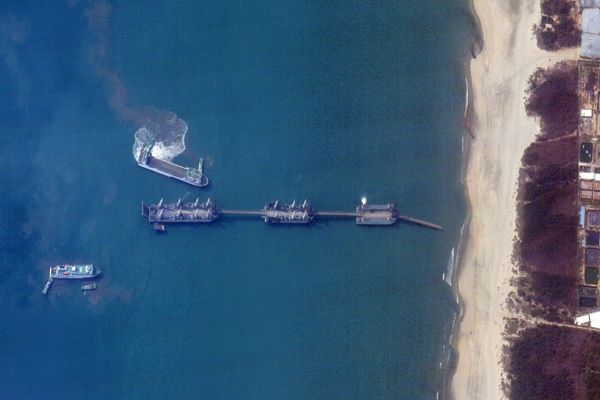
For the 42 days after launch, Australian scientists will track Nasa’s Artemis I on its way to the moon and back.
The launch was planned for Monday night, but was scrubbed due to technical issues. The next launch window will be on Friday.
The mission is a “full dress rehearsal” for sending humans to the moon in 2025, CSIRO’s Canberra Deep Space Communication Complex (CDSCC) spokesperson Glen Nagle says.
When it goes ahead, a Space Launch System rocket will boost the Orion spacecraft into Earth’s orbit. Then the Orion will use its own propulsion source to exit orbit and head into deep space.
About 70 minutes after the craft launches from Cape Canaveral in Florida, the CDSCC will pick up the signal, and it will work with its Nasa Deep Space network stations in Spain and California to monitor and triangulate the Orion.
Orion will spend about eight days getting to the moon, orbit for about a week, then splashdown in the Pacific Ocean in October.
Nagle – now 60 – said he was a seven-year-old boy in 1969 when he watched Buzz Aldrin land on the moon as part of the Apollo mission, and he felt like that again.
“It’s very exciting,” he said.
“The team in the control room will be busy readying the antennae to make first contact with the spacecraft. We’ll be the first station to have contact with the spacecraft as it begins its outward journey to the moon, then, of course, we’ll have continuous contact through our partners.
“We’re going to be getting telemetry from the spacecraft, ensure all the equipment is operating correctly and getting that information back to Houston, and we’ll be tracking it, making sure that it’s on course.”
The team will also monitor a small fleet of shoebox-sized satellites, or cubesats, to be deployed along Orion’s journey.
This is a practice run for when the crewed mission heads to the moon. That mission will not just orbit, but will land and start work on a settlement that will eventually be a jumping-off point for Mars.
This mission may not have a human crew, but it does have Captain Moonikin Campos on board. Moonikin, named by the public and partly in tribute to Apollo 13 engineer Arturo Campos, will wear the same full body spacesuits that Artemis astronauts will use and will be set up with sensors to detect radiation, acceleration and vibration.
He’ll be joined by two female-bodied mannequin torsos called Zohar and Helga.
“Sean the sheep” is on board, to recognise the involvement of the European Space Agency, and there are a range of other materials included as part of the experiment.
CSIRO’s executive director, Prof Elanor Huntington, said recent upgrades to the Canberra complex were critical to Australia’s role.
“Australia was there for the first moon landing and CSIRO is excited to be there for when Nasa lands the first woman and the first person of colour on the moon in the 2020s,” she said.
“CSIRO’s longstanding relationship with Nasa stretches back more than 60 years, creating breakthrough solutions from science, and fuelled by our shared ambition to push the boundaries of imagination to benefit life back on Earth.
“Our expert team at the CDSCC, and their sister Deep Space network stations located in Spain and the USA, will provide around-the-clock coverage of the mission.”
• This article was amended on 29 August 2022. The mission sending humans back to the moon is planned for 2025, not 2035 as the subheading and text of an earlier version said.







